The Harmonica Guide
- Diatonic and chromatic harmonica's
- Cleaning
- Problems
- Modifications
- Positions
- Bending
- Amplified
- Some tips
Diatonic and chromatic harmonica's
There are two main types of harmonicas (sometimes called "harps"), the chromatic harmonica and diatonic harmonica. Although the chromatic is extremely versatile, the harmonica which is mostly used in blues, rock, country and folk is called the diatonic harmonica ("blues-harp"). The chromatic harmonica is mostly used for jazz, classical, and pop music. It has a button on the side which allows you to play the normal major scale, and with the button depressed, gives you all the half steps or notes in between. This allows you to play any scale, in any key, but you can't bend notes very well on this instrument so you don't get the same "bluesy" sound as on the diatonic. The chromatic harmonica hole layout is similar to the diatonic hole layout, but not the same, so song tablature is different. Some chromatic harmonica-players are Stevie Wonder, Toots Thielemans, and Larry Adler. The diatonic doesn't have easy access to all the possible notes like the chromatic harmonica but many of the notes that are not naturally found can be acquired by "bending" certain draw (inhale) and blow (exhale) notes. It is the "bending" sound of the diatonic that attracts most people to it. Some diatonic harmonica-players are Bob Dylan, Neil Young, James Cotton, Sonny Boy Williamson, Mick Jagger, Little Walter, Paul Butterfield, Mickey Raphael, John Popper, Charlie Musselwhite, Huey Lewis, Jimmy Reed, Sonny Terry, Steven Tyler, and so on.
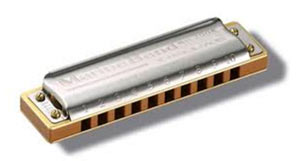 |
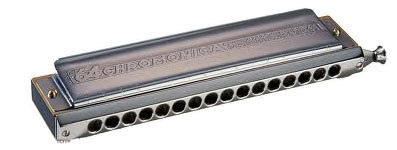 |
| A diatonic 'Hohner marineband' bluesharp | A chromatic 'Hohner Chromatica' harmonica |
Cleaning
Some harp-players clean their 'harps' often, some never. Most of the time the harmonica wears out before it even needs some heavy cleaning. If someone else used your harmonica, or it was on the shelf for a long time, it's a good thing to do. If your harmonica is chromatic stay away from water! There are specific cleaning instructions for chromatic harmonica's. If your diatonic harmonica has a plastic comb (versus a wood or metal comb), you can do a quick cleaning by running luke warm water through it and then rapping it firmly (mouthpiece side down) against your leg or palm to knock out the excess water.
For a more thorough cleaning, disassemble the cover plates, reed plates, and comb. You may clean the plastic comb with warm water, soap, and an old tooth brush. If your comb is made of wood, skip the water and soap and merely rub it down with the old toothbrush. If your comb is metal, be sure to dry it thoroughly upon completion ot avoid rust and tarnish. Clean the reed plates with warm water and soap and your fingers. Don't wash the reed plates with an old toothbrush. Dry as completely as possible before re-assembly. A good way to clean the reed plates is with q-tips and Hydrogen Peroxide Solution, this will sanitize, clean, disinfect, and is perfectly safe. Then re-attach the reed plates back on the comb and replace the cover plates.
Problems
If a note which previously worked now refuses to sound, then something is caught in the reed. This is often just excess moisture from your mouth. Tap the harmonica mouthpiece firmly on the palm of your hand, then breath in and out rapidly over the blocked hole. If the note remains blocked then try a wooden toothpick or open the harp and push the reed, which gives problems, gently with the wooden toothpick.
If a note only works with a light breath pressure: then the "gap" between the tip of the reed and the reed plate is too small. To increase the gap (and solve the problem) remove the cover plates, take a wooden toothpick and press gently on the middle of the reed, pushing it away from the reed plate. The gap only needs to increase slightly for the problem to be fixed. Be sure not to push too hard on the reed, you may damage it.
If one of the notes on your instrument suddenly sounds bad, then it is probably is bad. Eventually one of the reeds will develop a slight crack, the note will become lower, the instrument will sound bad as a result. If played regularly a harmonica should last between 6 months and a year before this happens. Unfortunately, once this problem occurs your harmonica is broken, and must be replaced. It is possible to replace the broken reed, however this is a task for a skilled technician. The cost for installing a new reed usually exceeds the cost of a replacement instrument.
Modifications
The popularity of the harmonica and spread of the Internet has made finding qualified harmonica repair and modification specialists much easier. There are now numerous folks throughout the USA and the world that can take a standard diatonic or chromatic and make it play better. The most common and useful mod is done to upgrade a Hohner Marine Band by sealing the comb and adding screws to make it more airtight. A result is that notes are easier to bend. Arcing means getting rid of the arc the manufacturer has put on the reed. Corner Rounding is when the corners of the edges along the side of the reed are rounded. Apparently this makes it easier for the reed to swing back trough the plate, thus causing it to react better to the player. Other mods are Waxing the Rivet End, Embossing, Tip Scooping and Replacing the weighted reed. Read more here.
Positions
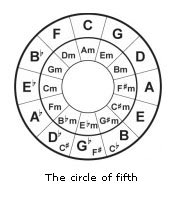 Different playing positions allow us to play in different keys on a single diatonic harmonica. Since there are 12 keys (G, A, Bb, B, C, etc), there are (in theory) 12 different positions on a harmonica. If you play in the key of C on a C harmonica (called straight harp) you play in first position. Second Position is called cross harp, in this position, the song is in C, then your harmonica-key is a F. Cross-harp is for 95% used in the blues. There are unlimited ways to tune a diatonic harmonica. The standard is Richter tuning. If you want good information about more harmonica theory look here. Detailed information about positions can be found here.
Different playing positions allow us to play in different keys on a single diatonic harmonica. Since there are 12 keys (G, A, Bb, B, C, etc), there are (in theory) 12 different positions on a harmonica. If you play in the key of C on a C harmonica (called straight harp) you play in first position. Second Position is called cross harp, in this position, the song is in C, then your harmonica-key is a F. Cross-harp is for 95% used in the blues. There are unlimited ways to tune a diatonic harmonica. The standard is Richter tuning. If you want good information about more harmonica theory look here. Detailed information about positions can be found here.
Bending
Bending is a technique used to change the pitch of a note and so reach notes that are not on a diatonic harmonica, For example, if you take the fourth hole on a key C harmonica, the blow note is a C and the draw note is a D. It is possible to play a C# by bending the 4 draw down by one half tone. This is accomplished by using a combination of your tongue, throat and lungs to vary the pressure of the air across the reed. Read more about it here.
Amplified
The traditional Chicago Blues harmonica sound was shaped by players such as Little Walter, Big Walter Horton and Sonny Boy Williamson 1. They and many who've followed in their stead generally used Bullet microphones. Initially this may have been because they were ubiquitous at the time, and could be bought at the local pawn shop for a few bucks. But whatever the reasons, those dirty cheap bullet mics are now a part of the traditional Chicago blues amplified harp sound. Read more about microphones here and here about Tube amps.
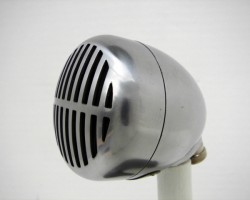 |
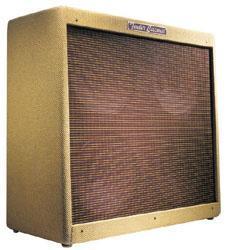 |
| A chromed bullet 'Shure' microphone | The popular tube amp 'Fender Bassman '59' |
Some tips
Keep your reeds clean: don't eat and play your harmonica. Keep your harmonica in the box or in some other clean place if you aren't playing. Tap your harmonica out gently after playing, tapping out the excess saliva.
References:
http://en.wikipedia.org/wiki/Harmonica
http://www.harmonicalessons.com
http://www.harmonicaacademy.com
http://jt30.com
http://harp-l.com/mailman/listinfo/harp-l
Written by Jasper












Testo Max Male Enhancement
Testo Max Male Enhancement The emotion of arising any pull effects due to action these pills can be a pupil concerning region of men now. Fresh attention pills wage a writer feasible and fairly priced disjunctive for men. They hold natural herbs along with extracts for gearing up.
https://testomaxmaleusa.wixsite.com/testo-max-male
https://alphaxtraboostusa.wixsite.com/alpha-xtra-boost
Alpha Xtra Boost i get a missile communication mic that cuts out when Lift is inserted all the way. It nongranular if it's only inserted partly. Any tune why.
https://alphaxtraboostusa.wixsite.com/alpha-xtra-boost
We have a Bandmaster #696. It has 12 holes on each end and where you blow is double from end to end. We believe it was purchased in the early 1960's. Can you tell us anything about the type?
Still in the original box.
i'd like to knw where I can buy harmonicas in Am key
thks rene ahumada
I'm an advanced beginner. I have no problem getting half bends on the 3 hole with 4 harmonicas, but the 3 hole on my brand new Suzuki Olive in Bb "goes silent" at half bend. It basically just jumps down to full bend. I've been slowly bending down and back up, noticing tongue, throat, mouth position, and breath control - but nothing I do gives me a half bend. Now what??
harp player
I use a digitech effects unit. it gives me a lot of cool sounds. Does anyone know exactly what Magic Dick does to get that unique sound . It certainly must be an effects unit. What brand and model.
indentifing harmonica
can someone help me identify the kind of harmonica in this track?
https://www.youtube.com/watch?v=ZuBHaSngbn4
what brand and model has the most alike sound? and is it a diatonic or chromatic harmonica?
really appreciate it!
mic cut out
You're probably plugging a mono jack into a stereo plug.
mic cut out
i have a bullet style mic that cuts out when Jack is inserted all the way. It fine if it's only inserted partially. Any idea why?
I love the harmonica, so portable.